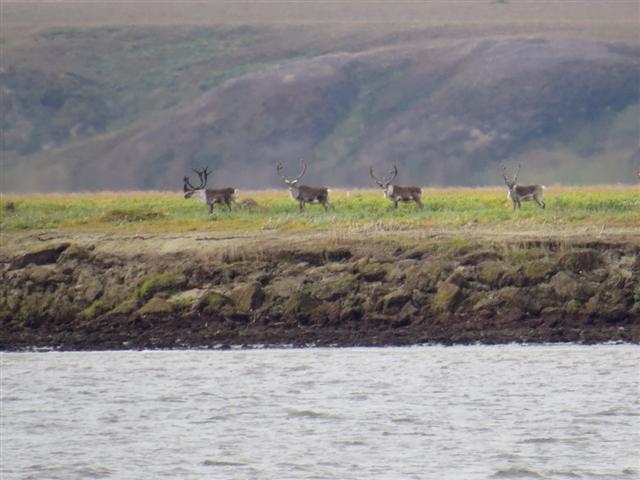
Looking back on the Laptev Sea
A WWF-led research team, a Canon photographer, and crew traveled to Siberia’s Arctic coast on the Laptev Sea, to help solve a scientific mystery. The Laptev Linkages expedition was sponsored by Canon.
Going into this trip, I fully expected to see maybe one or two polar bears, a few small groups of walrus, and likely some ringed and bearded seals. I was wrong on all counts. In the end we observed ten polar bears (7 individual adult bears and one sow with two cubs of this year), a couple thousand walrus, one ringed and no bearded seal, and no whales – but we did see musk oxen, reindeer, a stoat, and an even 50 bird species! We also sampled Arctic char the size of Pacific Salmon caught by local fishermen. A surprising abundance of life in a remote high arctic region that remains largely unpopulated and unused by people. The nearest village is a 15 hour boat ride and is home to the Dolgan people who look more to the land and the river for their sustenance, than the sea.
The old weather station we visited was shuttered 20 years ago and a few derelict hunting cabins dot the coast, many unused for even longer. It’s also a beautiful land and seascape. The tundra at this latitude is quite different from the polygon tundra of North America or Yakutia. Rolling hills dotted with wildflowers stretch out to low snow covered Mountains that run up the Taimyr peninsula, separating east from west. Many large and small lakes also dot the landscape and from the hilltops you can see for kilometers in all directions. Truly “big sky” country.
People however, are coming back into this area and not to just observe the weather or wildlife. As we flew up to Khatanga we made a stop in Igark, which has become a northern base for Russian Oil giant Rosneft. Rosneft is actively exploring the Laptev and Taimyr for potential oil and gas prospects- on and offshore. Shipping along the Northern Sea route, where the Taimyr remains a bottleneck for sea ice, has increased dramatically with the support of the world’s best fleet of icebreakers. More Russians are also coming north for sport hunting and adventure travel. We ran into both groups coming and going at the Khatanga airport.
While change is a part of the earth’s evolutionary history, the rapid loss of summer sea ice which is allowing much of this activity, along with higher than average temperatures onshore, are anything but natural. Industrial activity means this relatively pristine region is seeing increasing human disturbance and increased undersea noise. Both shipping and oil and gas activity also bring increased risks of accidents and potential oil spills. Having traveled the Russian Coast now from the Taimyr to Anadyr and the Alaska coast from Kaktovik to Nome, I can say first hand that no country is prepared for rapid search and rescue in the Arctic, and we simply lack the technology to deal with offshore oil spills in the Arctic.
As this trip has shown, we also lack fundamental biological data for much of the Arctic. What is present now? How do these ecosystems function? How might development affect the Arctic system? What can we do to mitigate the effects of development? Before we push too far ahead in development of resources, we really need to hit the pause button, invest in sound collaborative studies of the Arctic terrestrial and marine systems, and move forward with meaningful marine and terrestrial spatial planning that ultimately meets the needs of people and wildlife. In the Arctic, in places like the Laptev Sea, we still have the chance to do things right, to learn from our mistakes elsewhere and apply the best precautionary practices as we face the opening of a new Arctic Sea.
